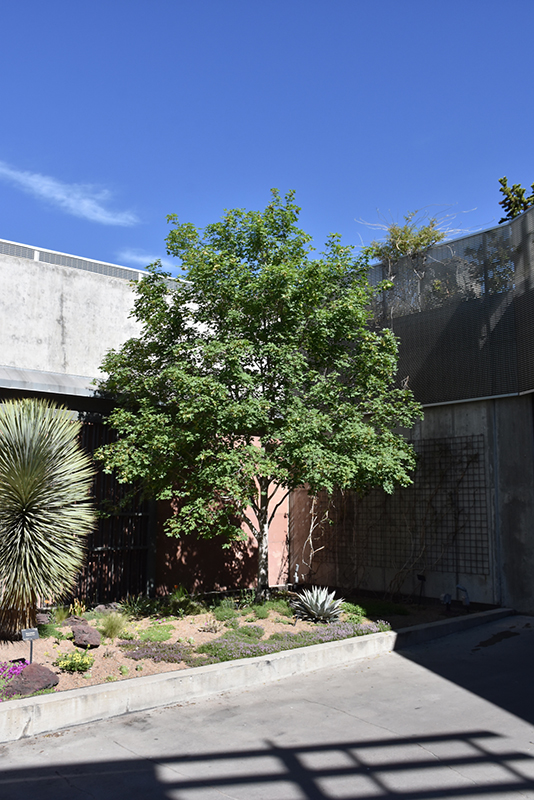Height: 45 feet
Spread: 30 feet
Sunlight:
![]()
Hardiness Zone: 3b
Other Names: Canyon Maple, Wasach Maple, Western Sugar Maple
Description:
This is a very hardy variety which thrives well in dry conditions and urban pollution; a strong upright growth habit with a showy display of red and orange in the fall; a great landscape or street tree
Ornamental Features
Bigtooth Maple is primarily valued in the landscape for its ornamental upright and spreading habit of growth. It has dark green deciduous foliage. The glossy lobed leaves turn outstanding shades of orange and red in the fall. The furrowed gray bark adds an interesting dimension to the landscape.
Landscape Attributes
Bigtooth Maple is a deciduous tree with an upright spreading habit of growth. Its average texture blends into the landscape, but can be balanced by one or two finer or coarser trees or shrubs for an effective composition.
This is a relatively low maintenance tree, and should only be pruned in summer after the leaves have fully developed, as it may 'bleed' sap if pruned in late winter or early spring. It has no significant negative characteristics.
Bigtooth Maple is recommended for the following landscape applications;
- Accent
- Shade
Planting & Growing
Bigtooth Maple will grow to be about 45 feet tall at maturity, with a spread of 30 feet. It has a high canopy with a typical clearance of 7 feet from the ground, and should not be planted underneath power lines. As it matures, the lower branches of this tree can be strategically removed to create a high enough canopy to support unobstructed human traffic underneath. It grows at a medium rate, and under ideal conditions can be expected to live for 80 years or more.
This tree should only be grown in full sunlight. It prefers to grow in average to moist conditions, and shouldn't be allowed to dry out. It may require supplemental watering during periods of drought or extended heat. It is not particular as to soil type, but has a definite preference for acidic soils, and is subject to chlorosis (yellowing) of the foliage in alkaline soils. It is highly tolerant of urban pollution and will even thrive in inner city environments. This species is native to parts of North America.
Disclaimer - This Plant Finder tool is an online resource representing many of the varieties that we carry over the course of the season, and is intended for informational purposes only. Inventory varies seasonally, so we cannot guarantee that every plant will be in stock at all times - please contact the store directly for current availability. It does not include our entire selection of plants, so be sure to visit our store to see varieties that may not be represented on this list.

